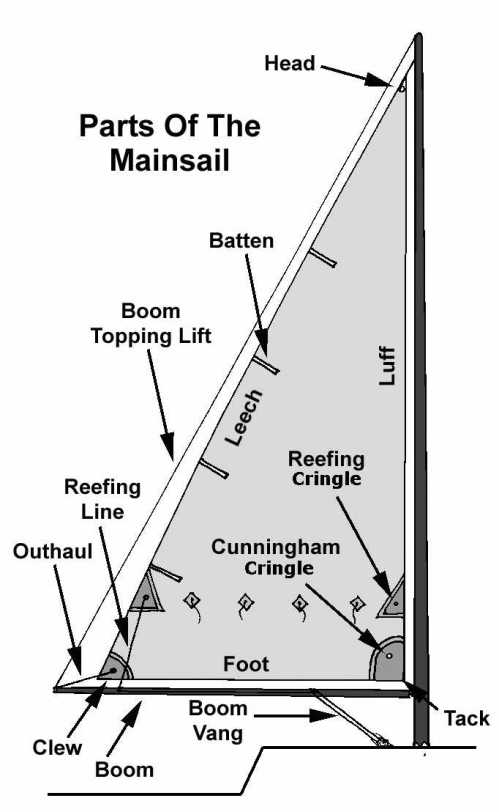What is the Traveler?
The traveler is a track with an adjustable car to which the mainsail sheet is attached. By sliding the traveler car to port or starboard, the position of the boom is changed without changing the length of the mainsail sheet. In other words, the traveler controls the boom’s angle to the center line and the twist of the mainsail.

Traveler
The traveler position affects the boat’s helm and can produce lee helm, weather helm or balance. Remember, that when trimming sails, your goal is to minimize rudder movement and keep it within a 0-5 degree band.
A primary use of the traveler is to keep the boom centered when sailing close-hauled. Because the mainsheet tackle covers a span between the boom and the boat attachment, the boom will move to leeward no matter how tight the mainsheet is sheeted in. Moving the traveler car slightly upwind when sailing close-hauled can bring the boom back over the center line to gain the most power from the mainsail. Easing the traveler is preferable to easing the sheet or vang, as pointing ability is more easily maintained.
Be careful not to bring the boom to windward of the center line, however. This causes a loss of power.
Trimming with the Traveler.
Generally, with increasing wind, the traveler should be moved from the center line to leeward until the main just luffs slightly in the parts near the mast. In lighter air, move the traveler to windward without having the boom cross the center line. Please note that there are exceptions to this, especially when racing.
Moving the traveler to windward also reduces boat heel and weather helm, the tendency of most sailboats to turn toward the wind with a gust. With the traveler in this position, you need less rudder angle to stay on course, it is easier to steer and boat speed should increase. As mentioned above, if you are sailing with a rudder angle of more that 5°, you are sailing “with the handbrake on”.
Beating and close reaching: Move traveler to adjust the mainsail’s angle to the wind.
Broad reach and running: Use the vang before easing the sheet and move the traveler as far as possible to leeward.
Reminder
To achieve optimum trim, there are four basic adjustments:
- Adjust twist with the mainsheet/vang tension.
- Adjust sail depth with mast bend and outhaul.
- Adjust draft position with main halyard.
- Adjust helm balance with traveler position.
As usual, go out and play with your adjustments as all boats are different and need to be adjusted accordingly.



 A deep sail provides more power for punching through waves while a flatter sail creates less drag. A flatter sail also creates less drag, is faster in smooth water, and also creates a wider angle of attack for pointer closer. A flatter shape is better in heavy air when a boat is overpowered.
A deep sail provides more power for punching through waves while a flatter sail creates less drag. A flatter sail also creates less drag, is faster in smooth water, and also creates a wider angle of attack for pointer closer. A flatter shape is better in heavy air when a boat is overpowered.